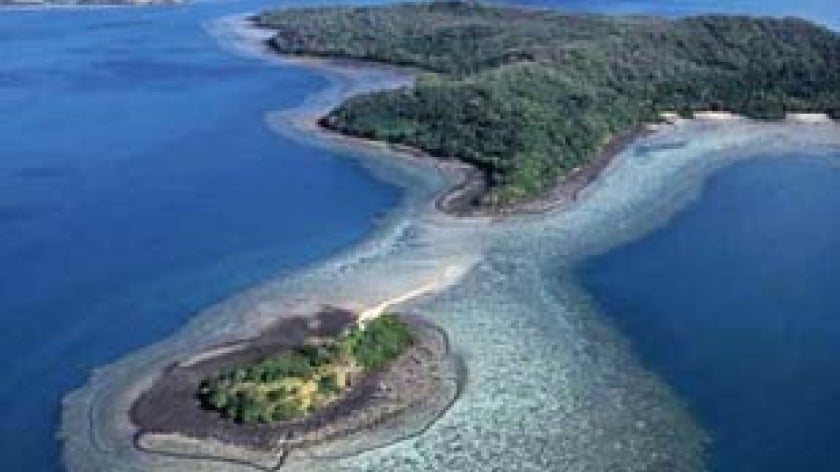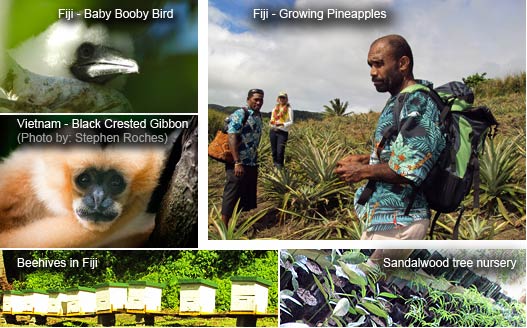
Contributed by Karen Azeez, Junior Professional Associate, Sustainable Development, The World Bank
August 2, 2011 - I recently found myself dancing with the elders of Lomati, a small village on a remote island in Fiji, drinking kava and wondering, “How on earth could this be work for a conservation project?” I was visiting Fiji and Vietnam as part of a team to supervise progress on the Critical Ecosystem Partnership Fund (CEPF), a multi-donor initiative for investment in biodiversity conservation. Until that moment, I had been under the impression that conservation was something purely scientific, and that my travel companions would be inanimate plants or animals. I also thought that working with the World Bank meant that I would surely be interacting with government officials on mega-projects. It turns out that I was wrong.
The CEPF is ten years old and has been funded by the Global Environment Facility, the World Bank, Governments of Japan and France, McArthur Foundation and Conservation International. It helps local communities and civil society organizations conserve important natural resources that bring economic and social benefits to the poor.
“These are the kinds of win-win solutions that justify moving conservation away from a solely philanthropic focus by showcasing proof of the financial self-interest of protecting biodiversity and natural capital,” said Dr. Valerie Hickey, a World Bank biodiversity specialist. For the Bank, this is the direction that conservation is headed.
In Lomati, we met with the Fijians for Fijian Forests organization and BirdLife International, who helped almost 200 villagers learn to manage tree nurseries, plant pineapples and maintain beehives in exchange for a community agreement not to clear forest on a nearby mountain. Not only did villagers gain job skills and generate new income, they helped save four endemic bird species under threat in the area. The idea turned out to be a good one, and it’s now being replicated in other villages across Fiji. Through initiatives like these, the CEPF fills a niche in the conservation sector by piloting innovative projects, giving organizations leverage to scale-up successful ideas.

“If the CEPF didn’t exist, a lot of these projects would never have materialized,” said Jack Tordoff, Grant Director for the fund. “There simply aren’t many other sources of funding for work at this level.” By contributing to the CEPF, the Bank has encouraged groundbreaking work in biodiversity and contributed to conservation worldwide.
In Vietnam, our team visited PanNature, a local non-profit organization that pioneered methods for conservation. Through the CEPF, PanNature took journalists to sites where important land had been degraded, allowing them to publish articles from first-hand experience in their own words. Several journalists from national and provincial newspapers and on-line publications wrote about landscapes being destroyed by unlicensed mining operations in Cao Bang province, home to the critically endangered Black-Crested Gibbon in Vietnam's northern highlands. This stirred up a national debate; the government of Vietnam took notice and addressed the problem, indicating the widespread effects of what was thought to be a small-scale project. In addition, this demonstrated achievement enabled PanNature to gain access to greater sources of funding for the future.
The strength of the CEPF lies in its ability to show the world why conservation matters, and teach us how to accomplish it in ways that help everyone. If you ask me, we should all start paying attention, because the projects of the CEPF are a glimpse into the future of sustainable development.
Additional Resources